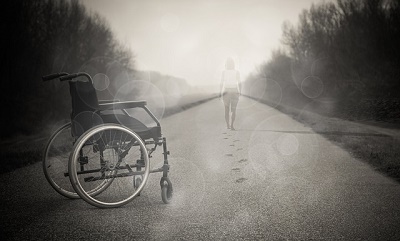Crimes Against Persons with Disabilities

Crime against people with disabilities, including those who are blind or have low vision, is a reality that calls for our attention.
A report from the Bureau of Justice Statistics (BJS) about violent crimes against people with disabilities has been published, with some disturbing findings. It presents estimates of nonfatal violent crimes (rape or sexual assault, robbery, aggravated assault, and simple assault) against persons aged 12 or older with disabilities. Disabilities are classified by types: hearing, vision, cognitive, ambulatory, self-care, and independent living.
The report details the victimization of persons with and without disabilities living in noninstitutionalized households and provides comparisons by age, sex, race, disability type, and other victim characteristics. It also includes crime characteristics, such as victim-offender relationship, time of a crime, reporting to police, and use of victim services agencies.
Findings are based on the National Crime Victimization Survey (NCVS) from 2017 to 2019 and 2009-2014. The U.S. Census Bureau’s American Community Survey. Age adjustment was used to standardize the rate of violence against persons without disabilities to show the rate if persons without disabilities had the same age distribution as persons with disabilities.
For this article, methodologies will not be discussed. We will look at some unsettling findings and ask ourselves, “What does this mean?” and “What does this mean to me?”
Highlights from the Report
Crime Against People with Vision Disabilities
- In the 2014 report, visual impairment was the only disability category within which women are significantly more likely than men to have been victims of violent crime (especially striking because, among people with and without disabilities, women are typically less likely than men to be victimized). However, the 2019 report does cover that data. In the 2017-2019 report, the percent of females of all disability categories who had been victimized was higher at 52.7% than males at 47.3%.
- In 2017-2019, people with visual impairment were second only to people with cognitive disabilities in being the victims of violent crime (47% vs. 83%).
- In 2017- 2019, people without disabilities were likely to report a crime 46.8% of the time while 43.2% of people with visual impairment reported the crime to the police.
Crime Against Persons with All Disabilities
- The rate of violent crime against individuals with disabilities was nearly four times the rate for persons without disabilities (49.2 compared to 12.4 per 1,000) age 12 or older)
- Persons with disabilities account for 12% of the population, but were victims in 26% of violent crime incidents.
- Persons with disabilities had higher violent victimization rates than persons without disabilities for all of the racial and ethnic groups measured.
- As in the 2014 data, the age group with the highest victimization rate was the 16- through 19-year-old group, followed by the 12- through 15-year-old group.
- The age group with the lowest victimization rate was 65 and older for persons with and without disabilities for both the 2014 and 2019 data.
- In the 2017-19 data, strangers carried out a lower rate of violent victimizations against persons with disabilities (32%) than against persons without disabilities (41%).
- As in 2014 data, in 2019 persons with cognitive disabilities had the highest rates of total violent crime excluding simple assault of individuals with disabilities. (34.6 per 1,000); however, in 2014, the rates were higher at 56.6%. People with hearing impairment had the lowest rate of violent crime at 23.6% excluding simple assault.
- A higher percentage of violence against persons with disabilities (40 percent) was committed by persons the victim knew well or who were casual acquaintances than against persons without disabilities (32 percent).
- Other relatives (including parents, children, and other relatives) accounted for a higher percentage of total violence against persons with disabilities (14 percent) than persons without disabilities (7 percent). This number was up from 11% for violence against people with disabilities in 2014.
Being Aware
I live in a relatively safe community and have never feared for my safety or been threatened physically. I have probably had a false sense of security and neglected personal safety measures. But as a woman who is visually impaired, I wonder how vulnerable I am in different situations.
This report has served as a conversation starter among the VisionAware peer advisors and a wake-up call to me personally. It has brought up other related topics like domestic violence and elder abuse among people with disabilities. And it begs the question, “What can we do to protect ourselves from violence and victimization?” Be sure to read stories and articles on these issues to help increase awareness of the problems and provide strategies and resources to address them.
Consider this report and think about your safety and what you can do to protect yourself.
by Audrey Demmitt, RN, VisionAware peer advisor
Related Articles
Crime Against Persons with Disabilities, 2009–2019 – Statistical Tables (ojp.gov)
Crime Against Persons with Disabilities, 2009-2014